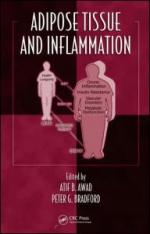|
This section contains 354 words (approx. 2 pages at 300 words per page) |
Inflammation refers to the body's response to a number of different types of insults. In response to injury or infection, the body will produce certain chemicals which have predictable effects on the surrounding tissues. Blood vessels in the area will dilate (expand) and become leaky. The leaky vessels cause fluid to collect, resulting in swelling. The expansion of blood vessels near the surface produces an increase in blood flow to the injured area, leading to a reddening of the skin, and causing the area to feel hot to the touch. Some of the chemicals which accumulate will cause pain.
As early as the first century B.C., a Roman writer named Cornelius Celsus described what have become known as the four classic hallmarks of inflammation: tumor (swelling), dolor (pain), rubor (redness), and calor (heat). An eighteenth-century surgeon in Scotland, John Hunter, was the first to recognize that inflammation is not actually a disease, but rather the body's unfortunately detrimental response to some other injury or infection.
It is currently known that inflammation can also result from the body's mis-recognition of its own tissues as foreign. This means that the body's immune system, designed to protect the body from attack by foreign invaders such as bacteria, viruses, or fungi, accidentally identifies the body's own tissues as foreign, and sets off a cycle of inflammation. In the case of this type of autoimmune reaction, the inflammation serves no appropriate purpose, and instead causes damage to the body's own tissues and organs.
Inflammation can be acute (quick and sudden in onset, and usually short in duration. Acute inflammation usually occurs in response to a sudden injury or exposure to some type of injurious agent (heat, radiation, or caustic chemicals). Chronic inflammation occurs when inflammation lasts for a relatively long duration. In this case, there may be an overgrowth of blood vessels and tissues in the area, resulting in a pattern of scarring. Autoimmune disorders such as rheumatoid arthritis follow this pattern. Some of the disability caused by such disorders, then, is due to the accumulation of scar tissue in an affected area of the body.
|
This section contains 354 words (approx. 2 pages at 300 words per page) |


